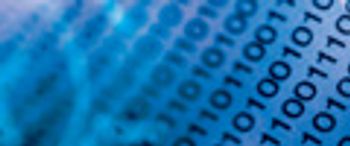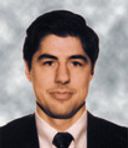
Part II of this series surveys the issues related to instrument measurement differences associated with the calibration transfer problem.

Jerome Workman Jr. serves on the Editorial Advisory Board of Spectroscopy and is currently with Unity Scientific LLC. He is also an adjunct professor at Liberty University and U.S. National University. He can be reached at jworkman04@gsb.columbia.edu.

Part II of this series surveys the issues related to instrument measurement differences associated with the calibration transfer problem.

A definition for calibration transfer is proposed, along with a method for evaluating it, based on recent discoveries about the nature of light absorbance in spectroscopic analysis.

In the final installment of this series, the main problem is solved using the CLS algorithm to find that the spectroscopy is sensitive to the volume fractions of the various components in a mixture.

The results from the experiment in the second laboratory are calculated and examined.

Here, the results are examined after repeating the original experiment in another laboratory.

The series on classical least squares continues with a comparison of experimental results and theoretical expectations.

Continued discussion of the classical least squares approach to calibration, with a focus on the reconstruction of mixtures

The detailed examination of the spectral behavior of three-component mixtures continues.

In the last four columns we described the theory of what should happen when we perform classical least squares calculations on mixtures when Beer's law applies. In this column we take our first look at what actually does happen.

The connection between the mathematics of classical least squares and the graphical displays used to present it is examined in further detail.

The authors continue their ongoing discussion of classical least squares with a look at spectroscopic theory.

The authors continue their discussion of the classical least squares approach to calibration.

In this month's installment of "Chemometrics in Spectroscopy," the authors begin a new subseries with the goal of explaining the classical least squares algorithm.

This installment of "Chemometrics in Spectroscopy" illustrates the various graphical ways used to observe and interpret comparative clinical quantitative measurement methods.

In this installment, columnists Jerome Workman and Howard Mark describe the statistical underpinnings related to computation and interpretation of chemometric methods and statistics for reporting clinical quantitative measurement methods.

This article describes the application of chemometric methods and statistics for reporting clinical quantitative measurement methods. The equations and terminology are consistent with the Clinical and Laboratory Standards Institute (CLSI) guidelines. These chemometric and statistical methods describe the accuracy and precision of a test method compared to a reference method for a single analyte determination. Part I will introduce these concepts and Part II will discuss the statistical underpinnings in greater detail.

Columnists Howard Mark and Jerome Workman, Jr. take a final look at the topic of principal components, which has been the subject of six previous installments.

This column is a continuation of the set we have been working on to explain and derive the equations behind principal components (1–5). As we usually do, when we continue the discussion of a topic through more than one column, we continue the numbering of equations from where we left off.

For a system of homogeneous equations to have a solution other than the trivial solution, the determinant of the system of equations must be zero.

Howard Mark and Jerome Workman, Jr. continue their discussion of the derivation of the principal component algorithm using elementary algebra.

Howard Mark and Jerome Workman, Jr. continue their discussion of the derivation of the principal component algorithm using elementary algebra.

Howard Mark and Jerome Workman, Jr. continue their discussion of the derivation of the principal component algorithm using elementary algebra.

In this month's installment, columnists Howard Mark and Jerome Workman, Jr. present the derivation of the principal component algorithm using elementary algebra.

Columnists Howard Mark and Jerome Workman, Jr. discuss the application of chemometric methods of relating measured NIR absorbances to compositional variables of samples.

This column is the continuation of a series (1-5) dealing with the rigorous derivation of the expressions relating the effect of instrument (and other) noise to its effects on the spectra we observe. Our first column in this series was an overview. While subsequent columns dealt with other types of noise sources, the ones listed analyzed the effect of noise on spectra when the noise is constant detector noise (that is, noise that is independent of the strength of the optical signal). Inasmuch as we are dealing with a continuous series of columns, on this branch in the thread of the discussion, we again continue the equation numbering and use of symbols as though there were no break. The immediately previous column (5) was the first part of this set of updates of the original columns.

Columnists Howard Mark and Jerome Workman, Jr. respond to reader feedback regarding their 14-part column on the analysis of noise in spectroscopy by presenting another approach to analyzing the situation.

In the second part of this series, columnists Jerome Workman, Jr. and Howard Mark continue their discussion of the limitations of analytical accuracy and uncertainty.

September 2006. In the first part of this two-part series, columnists Jerome Workman, Jr. and Howard Mark discuss the limitations of analytical accuracy and uncertainty.

In this month's installment of "Chemometrics in Spectroscopy," the authors again explore that vital link between statistics and chemometrics, this time with an emphasis on the statistics side.

In this month's installment of "Chemometrics in Spectroscopy," the authors explore that vital link between statistics and chemometrics, with an emphasis on the chemometrics side.